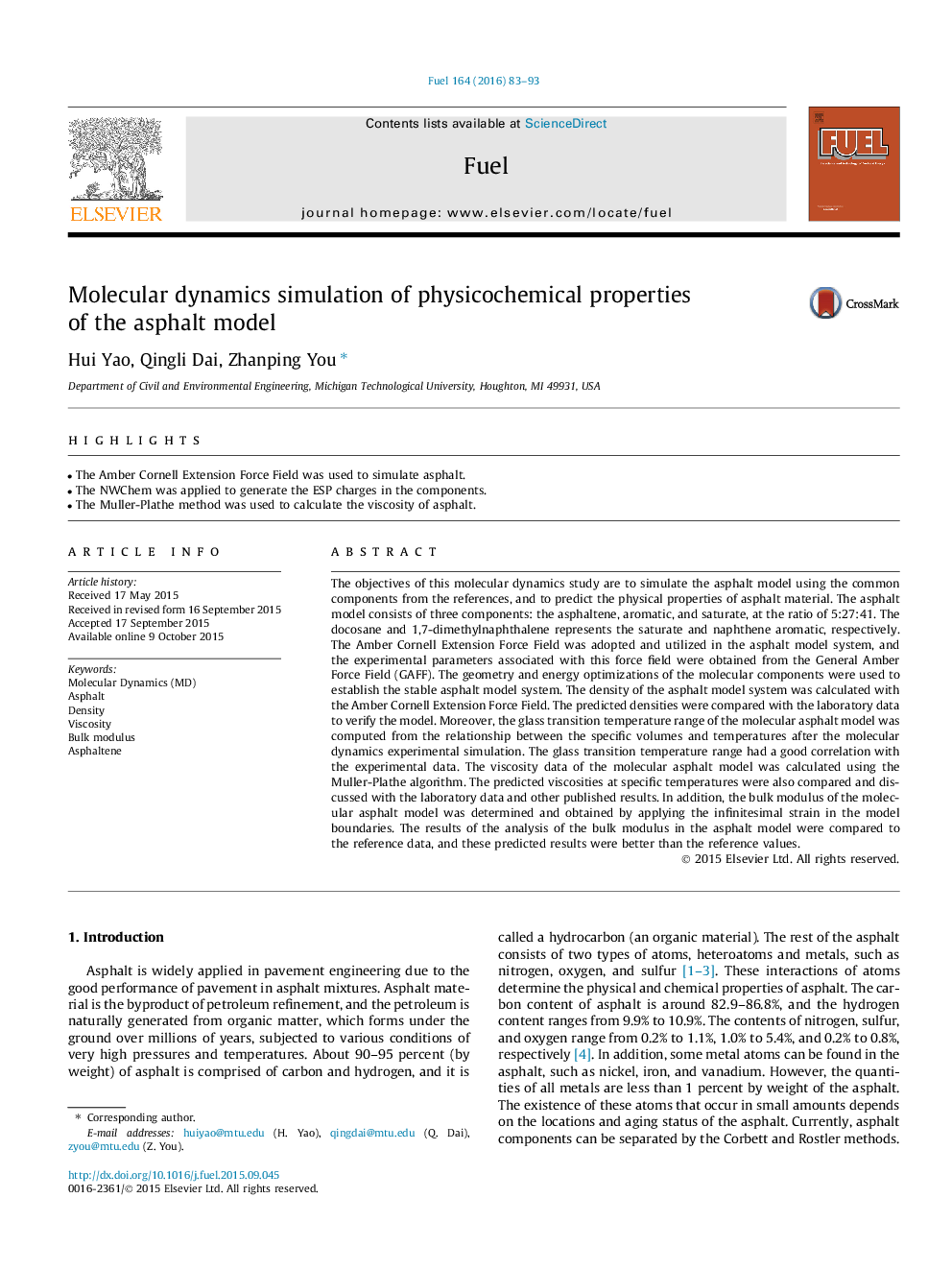| کد مقاله | کد نشریه | سال انتشار | مقاله انگلیسی | نسخه تمام متن |
|---|---|---|---|---|
| 205376 | 461107 | 2016 | 11 صفحه PDF | دانلود رایگان |
• The Amber Cornell Extension Force Field was used to simulate asphalt.
• The NWChem was applied to generate the ESP charges in the components.
• The Muller-Plathe method was used to calculate the viscosity of asphalt.
The objectives of this molecular dynamics study are to simulate the asphalt model using the common components from the references, and to predict the physical properties of asphalt material. The asphalt model consists of three components: the asphaltene, aromatic, and saturate, at the ratio of 5:27:41. The docosane and 1,7-dimethylnaphthalene represents the saturate and naphthene aromatic, respectively. The Amber Cornell Extension Force Field was adopted and utilized in the asphalt model system, and the experimental parameters associated with this force field were obtained from the General Amber Force Field (GAFF). The geometry and energy optimizations of the molecular components were used to establish the stable asphalt model system. The density of the asphalt model system was calculated with the Amber Cornell Extension Force Field. The predicted densities were compared with the laboratory data to verify the model. Moreover, the glass transition temperature range of the molecular asphalt model was computed from the relationship between the specific volumes and temperatures after the molecular dynamics experimental simulation. The glass transition temperature range had a good correlation with the experimental data. The viscosity data of the molecular asphalt model was calculated using the Muller-Plathe algorithm. The predicted viscosities at specific temperatures were also compared and discussed with the laboratory data and other published results. In addition, the bulk modulus of the molecular asphalt model was determined and obtained by applying the infinitesimal strain in the model boundaries. The results of the analysis of the bulk modulus in the asphalt model were compared to the reference data, and these predicted results were better than the reference values.
Journal: Fuel - Volume 164, 15 January 2016, Pages 83–93
